Rare Rides Icons: The History of Kia's Larger and Full-size Sedans (Part II)

We pick Kia’s large-car story once more today, at a point when the Korean manufacturer was in the midst of establishing itself as a proper full-line automaker, albeit with contributions from various other automotive firms. After Kia built Fiats and Peugeots via knock-down kits, it moved on to a light rework of the early Eighties Mazda 626. It made two cars out of the 626, its first midsize offerings. They were the upscale Concord and lesser (but still sort of upscale looking) Capital. But before we move on to the company’s first truly full-size car, we need to talk about the Mercury Sable for a moment.
Commenter Jslater89 pointed out in the comments of Part I that I’d missed one of the large cars Kia sold in the Eighties. Emphasis on sold there. It turns out Kia was a distributor of none other than the original light bar Mercury Sable. Why the Sable was chosen for distribution over the Taurus is unknown, and the deal is not well documented on Today’s Internet.
Since Kia didn’t slap their name on the Sable and didn’t build it in Korea, the company’s distributor role leaves the Sable in a middle ground as far as its status as part of the company’s lineup. But there was indeed a Sable at Kia dealerships, and above is an ad to back up that information. No word on how long the Sable sales lasted, but one would assume not more than a couple of years. Somewhere deep in Ford’s archives I’m sure there are some details on this deal, and they’d be very interesting to read. Now, onward to more Kias!
1992 was an important year for sedans at Kia. The Concord and lesser Capital received reworkings that year, and with their 1982 Mazda underpinnings continued on as New Concord and New Capital. While both cars received freshened styling, an important advancement arrived at Concord: A new fuel injected 2.0-liter DOHC inline-four, good for 139 horsepower. The engine was a development of the 1.8-liter Mazda F-series engine, which Kia always badged as 2.0 on the Concord. The old version of the engine with SOHC produced 110 horses.
Said old version of the 1.8 was not put out of use, however, as it was donated to the New Capital. It was very important that the lower-priced Capital be perceived in its proper pecking order in relation to the Concord, so when the 1.8-liter arrived in the New Capital it lost fuel injection and was re-carbureted. In a move your author hasn’t heard of before, the extensive engine downgrade sapped power down to 82 horses. Still, the 1.8 was better than the base 1.5-liter two-valve engine, which made 73 horses and was used mainly in export New Capitals.
While Kia messed around with trim and engines on its midsize models, it debuted the first full-size executive class car to wear its badge. The new model was called the Potentia, and it was a traditional rear-drive luxury sedan. Of course underneath it wasn’t a Kia, but rather an HC generation Mazda Luce. You’d know it as the 929.
Mazda’s cooperation with Kia and Ford was still in full swing at the time, so as soon as Mazda was done with the Luce the platform transferred over to Kia. The HC Luce was on offer from the 1987 through 1991 model years and was the company’s flagship sedan. Rare Rides has covered the 929 before, by the way. The Luce was available in sedan and hardtop formats, with the sedan presented as a much more attainable car than the hardtop.
Unusual for such a body style differentiation, the hardtop Luce was larger in every single dimension than its very similar-looking sedan brother. Though styling remained consistent between the body styles, the hardtop was 10 inches longer than the sedan, at 194 inches. It was also wider by an inch at 67.9″, which in Japan put it into the most expensive road tax bracket. The hardtop was also an inch shorter than the sedan (56.7″) to give it a sleeker appearance. If not parked side by side, one could identify the hardtop via its frameless windows and thin B-pillar.
The HC Luce was available with a range of engines of Mazda provenance: A 2.0-liter inline-four, 2.0-liter V6, a 2.2-liter inline-four, 3.0-liter V6 (used in the 929), and a 1.3-liter turbocharged Wankel rotary that was shared with the Eunos Cosmo. The Wankel was available only in hardtop examples of the Luce and was never sent to North America.
The boxy and conservative Luce saw less success as a 929 than it did in other parts of the world. Mostly ignored by large sedan buyers, in 1992 Mazda took a development of the HC platform (called HD) and released the curvaceous and forward-looking Sentia. The new flagship was again called 929 in North America.
The car was initially supposed to be a part of a multi-brand luxury strategy that would see Mazda launch Amati as a competitor to Lexus and Acura in North America. However, all of Mazda’s plans were slated to happen just as the Japanese housing bubble began, so instead Mazda gave up its luxury dreams for good.
And what did Kia do to make the Potentia more theirs and less Mazda? For starters, they replaced the front and rear clips. At the front, the headlamps and corner markers stayed the same, but the bumper and grille were replaced. The less upright slatted Mazda grille was replaced with a Mercedes-like egg-crate grille, split into sections by chrome (just like a 190E).
Kia used a Potentia-specific hood ornament, which was placed atop a hood that had a more pronounced power bulge than on the Mazda. The front bumper was revised for Kia duty as well. Its debut (above) was very splashy. Kia received only the sedan body style and was not allowed access to the Luce hardtop.
Side profile on the Potentia stayed exactly the same as the Luce, as doors, windows, roof, sills, and the like were not edited. Door trim grew a bit thicker on the Kia than the Mazda and was body-colored. At the rear, the bumper received a different trim strip to match the Potentia’s side trim. The brake lamps were initially just those from the Luce. But over time, Kia replaced the lenses with revised amber and smoked gray units.
Most of the edits were made to take up empty space and adjust for the U.S.-shaped license plates Korea used. The trunk lid on refreshed versions looked like it was new because it had a bit of trim that extended down in the middle toward the license plate. A clever visual trick.
In a bid to save some funds on the interior, Kia kept all hardpoints from the 1991 Luce as they were through the entire run of the Potentia. Materials were swapped out for Kia materials here and there, and climate control was added to replace Mazda’s manual sliders. Other than that all shapes were the same. It was an odd juxtaposition to see an updated Nineties (and 2000s) Potentia exterior matched with a very Eighties-looking Japanese interior.
To proudly power the Potentia, Kia took a mixed approach: While the base 2.0-liter engine was a Mazda FE mill from the Capella and similar, the mid-range engine was from Kia. Potentia borrowed its 2.2-liter inline-four from the first generation Sportage (1995-2004). And while neither of those engines would satisfy the North American large sedan buyer, the third option might have. The top line Potentia was called the President and used Mazda’s 3.0-liter V6.
The Potentia had a long run considering its Eighties bones and lasted all the way through 2001 without substantial changes. From your author’s time living in Korea in 2008 and 2009, the Potentia sold very well as an executive large car in its home market.
Circa 1998 there was a mild facelift (above), which coincided with the introduction of the Potentia’s replacement. We’ll pick up there in Part III, where we’ll also discuss the midsize that took over for the Concord end of the market.
[Images: Kia]

Interested in lots of cars and their various historical contexts. Started writing articles for TTAC in late 2016, when my first posts were QOTDs. From there I started a few new series like Rare Rides, Buy/Drive/Burn, Abandoned History, and most recently Rare Rides Icons. Operating from a home base in Cincinnati, Ohio, a relative auto journalist dead zone. Many of my articles are prompted by something I'll see on social media that sparks my interest and causes me to research. Finding articles and information from the early days of the internet and beyond that covers the little details lost to time: trim packages, color and wheel choices, interior fabrics. Beyond those, I'm fascinated by automotive industry experiments, both failures and successes. Lately I've taken an interest in AI, and generating "what if" type images for car models long dead. Reincarnating a modern Toyota Paseo, Lincoln Mark IX, or Isuzu Trooper through a text prompt is fun. Fun to post them on Twitter too, and watch people overreact. To that end, the social media I use most is Twitter, @CoreyLewis86. I also contribute pieces for Forbes Wheels and Forbes Home.
More by Corey Lewis
Latest Car Reviews
Read moreLatest Product Reviews
Read moreRecent Comments
- Calrson Fan Jeff - Agree with what you said. I think currently an EV pick-up could work in a commercial/fleet application. As someone on this site stated, w/current tech. battery vehicles just do not scale well. EBFlex - No one wanted to hate the Cyber Truck more than me but I can't ignore all the new technology and innovative thinking that went into it. There is a lot I like about it. GM, Ford & Ram should incorporate some it's design cues into their ICE trucks.
- Michael S6 Very confusing if the move is permanent or temporary.
- Jrhurren Worked in Detroit 18 years, live 20 minutes away. Ren Cen is a gem, but a very terrible design inside. I’m surprised GM stuck it out as long as they did there.
- Carson D I thought that this was going to be a comparison of BFGoodrich's different truck tires.
- Tassos Jong-iL North Korea is saving pokemon cards and amibos to buy GM in 10 years, we hope.



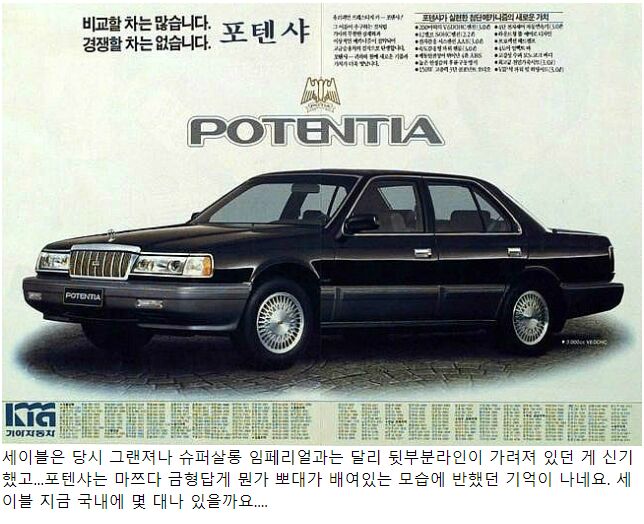



















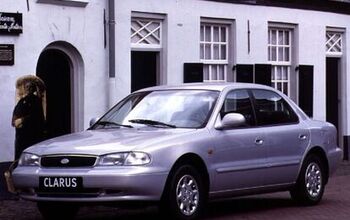
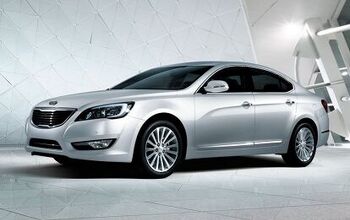
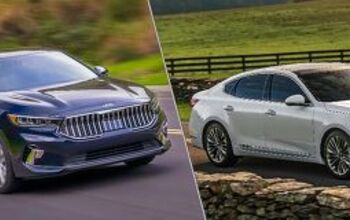
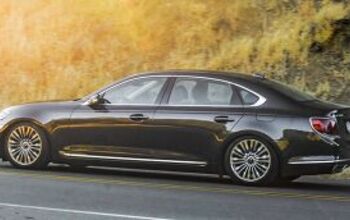
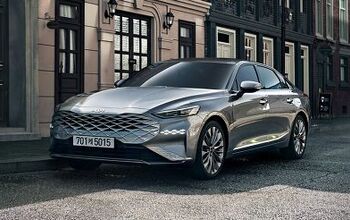









Comments
Join the conversation
As some have pointed out, the Kia Potentia clearly rides on the Panther platform.
Had a 90 929S when I was a junior in high school around 97-98. Out of all my teenage cars it was probably my favorite. Two tone silver with lower gray cladding, lace wheels, and it was in pretty good shape. I loved it being my first rear wheel drive car and had enough power to get the tail loose. Had enough space to put half of my class in the backseat. I think about that car of time to time and remember all the good times my first real girlfriend and I had in it.